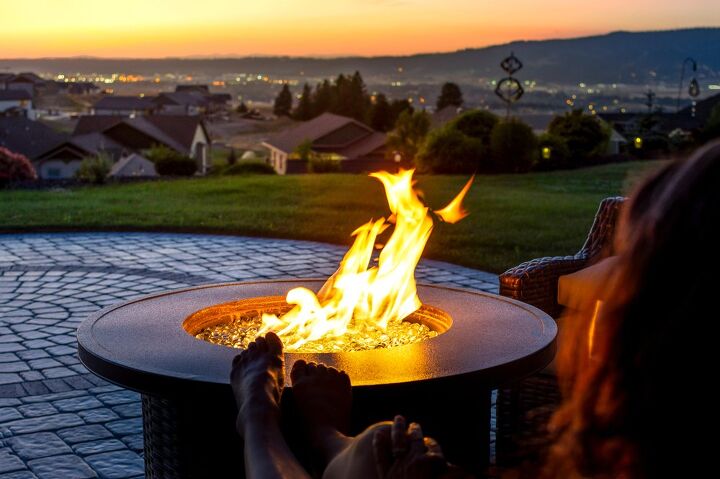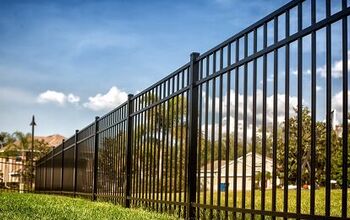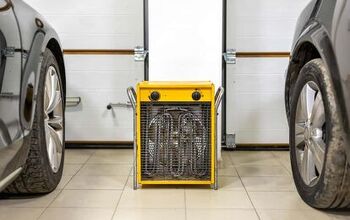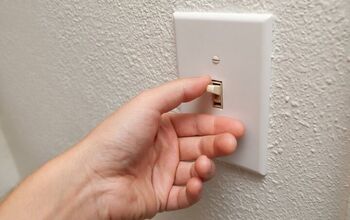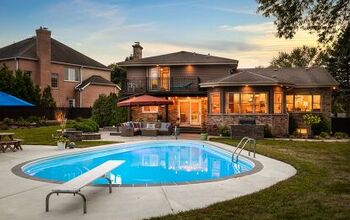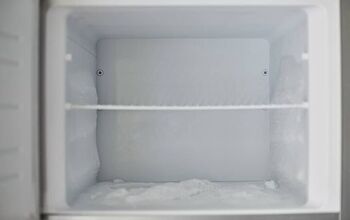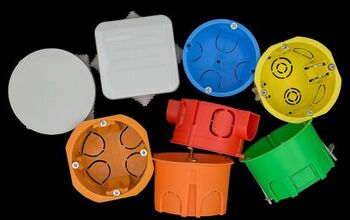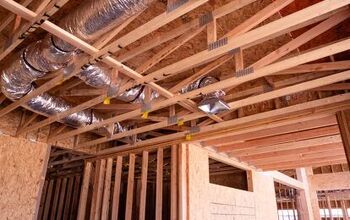Propane Vs. Wood Fire Pit: Which One Is Better?

Fire pits are some of the most attractive and versatile outdoor heating options available for your backyard space. They come in wide array of sizes and styles to fit your home and unique needs. However, there are two main types of fire pits to choose from, categorized by the fuel type they burn: wood and gas (more specifically, propane gas).
So, what is the ideal fuel choice for a fire pit? Continue reading as we explore propane vs. wood fire pits to help you make an informed decision on which option is best for your backyard.
Do You Need Water or Fuel Tank Installation or Replacement?
Get free, zero-commitment quotes from pro contractors near you.

Fuel Type
Propane fire pits require propane to operate; though, the other gas option is natural gas. Whereas, wood fire pits use dry wood to function. Since they have to be able to hold large logs, wood fire pits tend to be designed slightly larger than propane fire pits.
For both types, it is crucial that you know that you have a supplier for your fuel. Wood fire pits require good firewood, while propane fire pits necessitate the use of a propane supplier. Do you live in a remote location with access to tons of firewood? Or, do you live in a suburban neighborhood with a gas line already in place.
Additionally, if you plan to burn propane in your fire pit, your home must be accessible to a delivery truck. With that said, the type of fire pit you choose is heavily influenced by fuel availability.
Fuel Safety
Fire can always pose a sure risk, especially outside and in dry conditions. While fire pits are designed to contain fire and either fuel type can be unsafe, the ember produced by burning wood can float away and cause forest fires. However, wood fire pits pose little risk of explosion, unless you use a firestarter fluid to build the fire. Both falling logs and embers are a concern with wood fire pits. So, if you have pets or kids it’s important that you teach them how to behave safely around a wood fire pit.
Propane fire pits, on the other hand, utilize highly flammable propane as their fuel. Although carbon monoxide isn’t as much of a worry as the fire pit will be located outside, explosion is still a significant risk. Gas lines that aren’t properly installed can also be a risk factor in propane gas fires, so make sure that your fire pit follows industry standards regarding safety.
Fuel Storage
When choosing between propane and wood fire pits, storage is another factor to consider. Propane fire pits require a storage tank and depending on how often it’s used you may need anywhere from a 15-gallon to a 100-gallon tank. These tanks are not appealing, so you’ll also want to think about a landscaping plan to conceal it on your property.
On the other hand, wood fire pits require a place for firewood storage. Firewood must be stored in a location that is dry and away from the side of your home, as they can harbor termites. Think about where you can stack firewood on your property that stays dry and does not take away from your home’s appearance.
Efficiency
Overall, propane burns cleaner than wood. It also does not generate any physical waste, while wood does produce soot and ash. However, unlike gas, wood is a renewable resource. So, environmentally speaking it is a toss-up.
Though, the signature aroma that wood fires produce can linger, as a result of the soot coating on the interior walls of the fire pit. This means that you’ll spend more time cleaning a wood fire pit than a propane one. Additionally, if you or one of your family member’s is sensitive to smoke, propane may be the better option.
Since propane burns cleaner and releases fewer emissions into the atmosphere than wood, propane fire pits are always the more energy efficient option. In fact, wood fire pits discharge about 28 more pounds of emissions into the air each time they are used. Whereas, propane fire places are around 95% efficient and create 99% fewer emissions than wood fire pits.
Installation
When it comes to the installation process, wood fire pits are generally easier to install. With propane pits, gas lines have to be run, which requires professional assistance. This also equates to a longer installation time for propane fire pits. Wood fire pits, on the other hand, can often be done as a DIY project. However, for safety purposes, it is still recommended to have a professional build you wood fire pit.
Even with the increased time to install a propane fire pit, they still do not require nearly as much time to tend once installed – with all the stacking, carrying, ordering, and seasoning of wood that must be done throughout the year for a wood fire pit. When a propane fire pit is installed, all you have to do is press a button to turn it on.
The professional installation process of a propane fire pit vs. a wood fire pit differs in that a wood fire pit only requires a metal frame and with stone or brick on top. The fire pit also must be located a distinct distance from your house. With propane fire pits, however, there may be fewer safety rules involved but the gas lines must be installed properly.
Project Cost
The cost to install a wood fire pit depends on a number of factors, including the material you use for the exterior of the pit and the cost of professional installation. Materials can range from $300 to $800, or more, while installation usually costs between $50 and $60 an hour. This brings the total average cost of a wood fire pit to between $500 and $1,300, depending on the final touches you choose.
The price of a propane fire pit also varies depending on specific features, including materials, placement, and size. Materials range from $400 to $3,000, or more, and installation is usually $500 to $800, depending on the complexity of running the gas line. This brings the total cost for a propane fire pit to between $900 and $3,800 on average, which is significantly higher than a wood fire pit. For ease, the following table helps put all these costs in a more visual format:
| Wood Fire Pit | |
| Materials Only | $300 to $800+ |
| Installation | $50 to $60 an hour |
| Total Cost | $500 to $1,300 |
| Propane Fire Pit | |
| Materials Only | $400 to $3,000+ |
| Installation | $500 to $800 |
| Total Cost | $900 to $3,800 |
Maintenance
Overall, wood fire pits are more difficult to maintain as they collect the physical debris that results from the fire. The soot, ash, and remaining logs that the fire produces must be shoveled out on occasion. Not only is cleaning a fire pit necessary for cosmetic purposes, it is also necessary for safety. Debris materials, like hot embers and creosote (a tacky byproduct of burned wood), can create a fire hazard.
However, this is not a problem with propane fire pits, as propane is a clean-burning fuel. In fact, these fire pits require very little maintenance since there are not logs or soot to clean out. Though, you may need to have the gas lines inspected regularly to ensure there are no leaks or weak spots.
Home Resale Value
Both propane and wood fire pits can increase the resale value of your home, especially if they are permanently installed in a visually appealing way. Though, since propane fire pits are more eco-friendly and easier to maintain, they tend to have a higher return on investment. Whereas, wood fire pits can create a beautiful ambiance in your outdoor space.
Do You Need Water or Fuel Tank Installation or Replacement?
Get free, zero-commitment quotes from pro contractors near you.

Propane vs. Wood Fire Pit
When it comes to propane vs. wood fire pits, the biggest factor is personal preference. While some feel that a fire would not be the same without the distinctive aroma and the crackle of wood, others see the benefit in the clean-burning, low maintenance, and general convenience of propane. So, the choice is yours.

Jessica considers herself a home improvement and design enthusiast. She grew up surrounded by constant home improvement projects and owes most of what she knows to helping her dad renovate her childhood home. Being a Los Angeles resident, Jessica spends a lot of her time looking for her next DIY project and sharing her love for home design.
More by Jessica Stone



